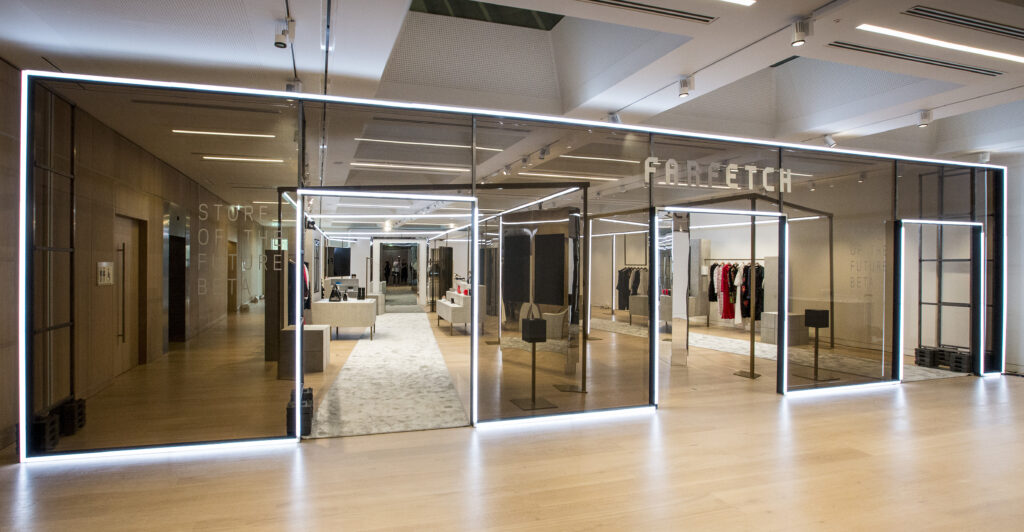What’s in store for this year’s digital landscape? At Voa Labs, we’ve researched and identified the top 5 digital experience trends of 2020.
This info can help organizations deliver more compelling customer experiences while maximizing the value of digital products and services. Excellence in digital experience design is vital for navigating customers along the increasing span of digital touchpoints.
#1. Smart Stores
In this age of expanding digital commerce, the lines between physical stores and online stores will continue to blur. Brick-and-mortar stores will boost their digital efforts beyond traditional online shops. For instance, they’ll open APIs, offer online-order/offline-pickup options, or take advantage of immersive technologies.
Meanwhile, digital retailers will open physical stores to provide multi-sensory experiences that they simply can’t offer online.

How physical and virtual stores evolve will culminate in the same thing: smart physical stores that provide rich customer experiences. These next-generation stores will leverage the advantages of the online and digital experience (e.g. wide product range, rich information, and personalization) together with unique physical store experiences that aren’t available online (e.g. multi-sensory experiences, trials and demo, instant gratification, and relationships with sales associates).
#2. Agent Interfaces
Agent interfaces utilize artificial intelligence technologies to predict user intentions by analyzing user inputs and contextual cues. These predictions help users execute their intentions by easing or automating the process. So, users won’t have to spend so much time figuring out how a tool works; instead, they can focus on using it to get the job done.
Chatbots and voice applications, known as conversational user interfaces, are examples of agent interfaces.

Agent interfaces are ideal for repetitive, low-stake transactions, such as ordering food, checking an account balance, or requesting an Uber ride.
#3. Multiexperience
Hello multiexperience, the evolution of omnichannel. While omnichannel reflects an inside-out mentality that focuses on channels and technologies, multiexperience reflects an outside-in mentality that focuses on the experience itself.
Until now, people have thought of a computer system in a limited fashion: as a single device. But these days, we have the multiexperience. Now, users interact with platforms made up of multiple touchpoints and sensors, such as smartphones, wearables, or voice assistants.
A multiexperience strategy demands a seamless customer experience. Its success depends on a consistent and unified user experience (UX) across web, mobile, wearable, conversational, and immersive touchpoints. Every touchpoint must be rooted in a single thread of communication; that way, customers will feel like they’re having one continuous conversation with an interconnected system. So, no more having to repeat who they are and what their request is.
“By 2023, more than 25% of the mobile apps, progressive web apps and conversational apps at large enterprises will be built and/or run through a multiexperience development platform.”
– Gartner
#4. Emotion-based Personalization
Gone are the days when customers can be segmented in one bucket. We know that personalized experiences and products boost customer satisfaction and loyalty, and this insight has led to hyper-personalization with a segment of one.
As a next step, products will be adjusted to the customer’s emotional state. Using artificial intelligence (AI), organizations will predict the emotions of users to enhance customer experiences and products, even beyond the purchase.

The ability to identify emotions will also be used for targeted advertising. Indeed, real-time mood-based marketing is a growing trend. Gartner predicts that by 2024, AI identification of emotions will influence more than 50% of all online advertisements.
#5. Interfaceless Machines
Traditionally, most machines have integrated user interfaces operating them. But soon, on-machine interfaces will be abandoned in favor of applications that run on their operators’ mobile devices.
Larger screens, higher resolutions, and numerous built-in sensors — these will enable mobile devices to control machines in ways that exceed what would be possible with on-machine interfaces. These mobile devices connect wirelessly with machines via Bluetooth, WiFi, or the internet.
